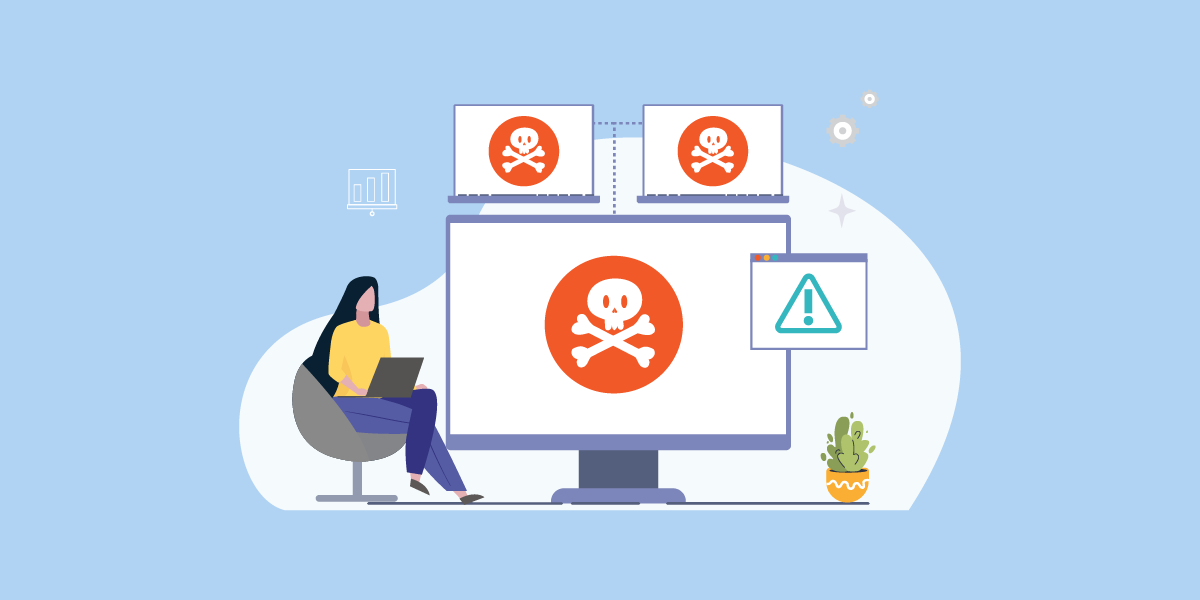
Introduction
Websites are essential for businesses, organizations, and individuals. However, this connectivity also exposes them to cyber threat which is the Distributed Denial of Service (DDoS) attack. This article will explain what are DDoS attacks and how to safeguard your website from them, preventing potential financial losses.
What is a DDoS Attack?
A Distributed Denial of Service (DDoS) attack is a malicious attempt to disrupt the normal traffic of a targeted server, service, or network by overwhelming the target or its surrounding infrastructure with a flood of Internet traffic. Web servers which can’t handle the traffic will then lead to website crashing, server being unavailable and so on.
Bots are the compromised machines on the Internet that are controlled by hackers or criminal organizations that perform such attacks. Learn more about bot traffic.
Types of DDoS Attack
There are three different types of DDoS attacks:
Volume-Based Attacks
- Flooding the server with a large amount of traffic, aiming to overwhelm the network bandwidth.
- E.g., ICMP floods, UDP floods.
Protocol Attacks
- Targeting Layer 3 and Layer 4 of the protocol stack, sending malicious requests that exploit vulnerabilities to consume the bandwidth of crucial network infrastructure elements.
- E.g., SYN floods, fragmented packet attacks, Ping of Death, and Smurf DDoS.
Application Layer Attacks
- Targeting vulnerabilities in the application layer (Layer 7).
- These are hard to detect as they can sometimes crash the web server with a smaller volume of requests compared to the other two types.
- E.g., low-and-slow attacks and GET/POST floods.
How to Identify If Your Site is Under a DDoS Attack
Here are key indicators that you might be under a DDoS attack:
Slow or Unresponsive Website
- If your website experiences slowdowns or becomes inaccessible to users, it may signal a DDoS attack.
- This occurs when the attacker inundates your server with requests, overwhelming the system and causing it to slow down.
Unusual Spike in Web Traffic
- This can be identified by monitoring your website’s server logs or utilizing a web analytics tool.
- A sudden rise in traffic originating from a particular location or IP address could indicate that your site is under attack.
Unexplained Errors and Timeouts
- If users encounter frequent errors or timeouts when trying to visit your site, it could indicate a DDoS attack.
- Look out for error messages or HTTP error codes, such as 503 (Service Unavailable) or 504 (Gateway Timeout).
Resource Depletion
- An increase in server CPU or memory usage may indicate that your site is under attack.
- This occurs when the attacker’s requests overwhelm your server’s resources, leading to slowdowns or unresponsiveness.
How to Protect Your Website from DDoS
Here are a few steps you can take to help protect your website from DDoS attacks.
Implement Web Application Firewalls (WAFs)
A WAF can filter and monitor HTTP traffic between a web application and the Internet. Implement blocking by using firewall list by country/ASN such as those provided by IP2Location.
Block by country: https://www.ip2location.com/free/visitor-blocker
Block by ASN: https://www.ip2location.com/free/visitor-blocker-asn
Use a Content Delivery Network (CDN)
A CDN distributes the content of your website like images, videos, and scripts onto servers worldwide. This not only speeds up content delivery but also helps mitigate DDoS attacks by distributing the attack load among multiple servers in many regions.
Maintain Network Redundancy
Distribute your resources geographically and use multiple servers to handle traffic. This ensures that even if one server is compromised, others can pick up the slack, maintaining the availability of your website. Make use of a load balancer to help manage traffic to the servers with health checks to exclude traffic to unavailable or busy servers.
Implement Rate Limiting
Implement rate limiting and traffic filtering to block or restrict traffic from suspicious sources. Rate limiting controls the number of requests a server will accept from a single IP address in a given time frame.
Use DDoS Protection Services
Specialized DDoS protection services, such as Cloudflare, Akamai, and AWS Shield, offer advanced mitigation techniques and can handle large-scale attacks effectively.
Regularly Monitoring and Analyzing
Regularly monitoring your website’s traffic, performance, and security can help detect unusual activity early. Use tools that provide real-time traffic analysis to identify and respond to potential threats promptly.
Develop an Incident Response Plan
Having a well-documented and tested incident response plan ensures that your team knows exactly what steps to take in the event of a DDoS attack. This helps to limit any potential damage that can be inflicted with quick decisive mitigations.
Keep Software and Systems Updated
Regularly update your operating systems, applications, and network devices to ensure they have the latest security patches. This has the added benefit of protecting your IT infrastructures from being compromised and becoming part of a botnet that performs DDoS attacks.
Conclusion
DDoS attacks pose a significant threat to the availability and performance of websites. Understanding the nature of these attacks and implementing a comprehensive defensive strategy is crucial for safeguarding your online presence.
THE POWER OF IP GEOLOCATION
Find a solution that fits.
